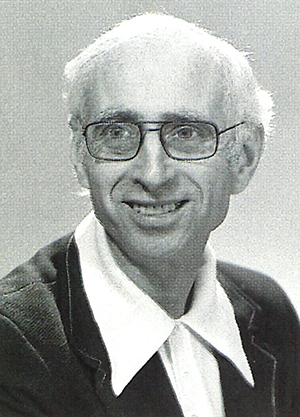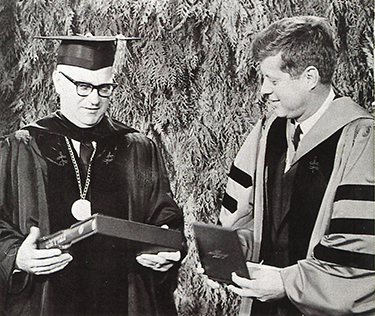James Sneddon captured UW history through his lens
 James Sneddon, ’63, ’70, who captured the people and events of the University of Washington on film for more than three decades as the University’s chief photographer, died May 10, 1997. He was 77.
James Sneddon, ’63, ’70, who captured the people and events of the University of Washington on film for more than three decades as the University’s chief photographer, died May 10, 1997. He was 77.
Born to parents of Scottish and Irish decent, Sneddon grew up in Port Angeles, served in the Army and first got into photography when he “liberated” a camera from a German chemical factory during World War II. It was the start of a remarkable photography career in Seattle and at the UW.
After the war, he attended photography school and joined the Seattle Times as a staff photographer, but only lasted a year before joining the UW as supervisor of news photography. He relished the opportunity to capture on film everything happening at the UW. He photographed such subjects as medical procedures, visits by such dignitaries as President John F. Kennedy, fisheries research projects in Alaska, and student uprisings in the 1960s.
“He was more than just a photographer,” says Irv Blumenfeld, a former director of the UW News and Information Office, who worked closely with Sneddon for many years. “He had a keen sense of news. He had a nice sense of humor, got along with everyone, and never had any trouble getting people to pose for him, even when it sometimes meant busting in on their privacy.”
Sneddon, who also photographed Douglas MacArthur, Edward Teller, John Glenn, Hyman Rickover, Nelson Rockefeller, Lillian Gish and Robert Kennedy during his UW career, was particularly proud of earning both bachelor’s and master’s degrees from the UW after taking classes for 22 years.

President John F. Kennedy confers with then UW President Charles Odegaard during Kennedy’s 1961 visit to campus. Photo by James Sneddon.
Sneddon graduated from Roosevelt High School in Port Angeles in 1937 and attended the College of Puget Sound for one semester until 1940, when he went on active duty in World War II as a field artillery observer.
On assignment as a cinematographer for the Atomic Energy Commission, he accompanied a team of scientists, including Loren Donaldson, a UW fisheries professor, to Bikini in the South Pacific to document biological changes on the atoll after the cessation of thermonuclear testing.
He was very active in the field, serving as president of the Seattle Photographers Society and PRIMA gallery, a cooperative arts organization. He also taught thousands of people in his night photography classes.
His negative files revealed student demonstrations, fires, explosions, floods and similar events. At the UW, in addition as serving as chief photographer and head of photography, he was the manager of broadcast and photographic services from 1971 until his retirement in 1979.
After retiring from the UW, he devoted his time to his photography business he ran with his wife, Sharon, a freelance writer. They spent several weeks each year volunteering for national parks, national forests and the Bureau of Land Management across the U.S., Hawaii and the Virgin Islands.